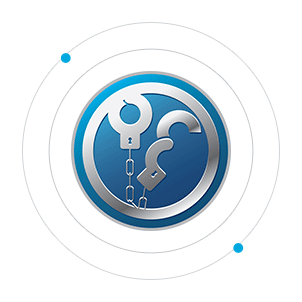Data compiled by Statista shows that the amount of losses to online payment fraud globally has more than doubled between 2021 and 2022. Projections show that the numbers are set to reach a record high in 2023. The trends are moving upward, unlikely to reverse in the foreseeable future.
Scam Detectors Most Trusted Websites in Online Security
- Guard.io (100): Surf the web safely. Clean up your browser, remove malicious extensions and check for privacy violations.
- Incogni.com (100): Delete your personal data from the internet and protect against scams and identity theft.
- ExpressVPN (100) Stay secure and anonymous online - Best VPN Out There

Pundits point out easily the inherent weakness when it comes to cybersecurity. Humans, after all, are dubbed as the weakest link in any organization’s security posture. It is easier to deceive or mislead people than to find loopholes in properly configured and maintained automated cyber defenses. Also, the perennial human problems of negligence and carelessness remain difficult to resolve.
However, there are other reasons that make it difficult to stop online fraud. Far from obscure, these reasons are usually right under everybody’s noses. It is important to get acquainted with them to address them accordingly. Here is what I found to be the three most important reasons why efforts to stop the online fraud fail.
1. Overconfidence
With many surveys showing that organizations are aware of their cybersecurity challenges, many tend to believe that the difficulty in addressing online fraud stems from the lack of capabilities. It’s a rarity for organizations to admit that they have become too confident in their cyber defenses.
This overconfidence is present on two fronts: having excessive trust in the cybersecurity solutions put in place and overconfidence when it comes to cyber skills. Indeed, there are many reliable online fraud prevention solutions on the market. However, it is advisable to be careful in choosing and using them.
They have to be properly configured and integrated with other existing security products, given the inevitability of relying on multiple security products.
A white paper by risk and financial solutions firm Kroll shows how too much confidence in cyber solutions can be costly to companies. The paper shows that 87 percent of CFOs are confident in their cybersecurity capabilities.
However, the same paper says that 71 percent of business executives admit that they have suffered losses from cyber incidents over the past 18 months (since the test was taken).
This unnecessary abundance of confidence in cybersecurity tools and cyber skills only benefits the attackers. It makes organizations less rigorous with their protocols and rules.
It boosts the chances of vulnerabilities emerging as employees become over-reliant on conventional protections that lack the functions suitable for the kind of threats organizations are facing.
2. Failure To Scale Up
Digitalization saw rapid acceleration as organizations adapted to the radical changes brought about by the pandemic. This meant an exponential increase in the number of connected digital devices that can become possible attack points. Also, more organizations embraced cloud computing and hybrid IT environments, further complicating the setup of establishing cybersecurity.
Unfortunately, not many organizations were quick on their knees to keep up with the expansion of their attack surfaces. They failed to anticipate the need to expand their cybersecurity capabilities.
In particular, organizations had a hard time achieving optimum security visibility. Their problems with shadow IT only worsened as their IT infrastructure changed and more devices and online assets were added to their networks.
On the other hand, the increased digitalization has led to more customers choosing to do transactions digitally and online. These customers similarly become added responsibilities for organizations.
Organizations do not only have to worry about the exposure of employees to online fraudsters. They also have to ascertain that their customers do not fall prey to cybercriminals who employ various forms of social engineering to defraud online customers.
3. Topsy-turvy Balancing Act
Moreover, a handful of organizations fail in their fraud prevention efforts because they cannot strike the perfect balance between cost optimization, the institution of defensive tools and mechanisms, and maintaining good customer experiences. Many have difficulties recognizing the need to keep these factors in perfect harmony to achieve the best outcomes.
Certainly, online fraud prevention entails costs. Organizations need some outlay for the tools and systems. It is also important to provide corresponding training on using these tools and to educate everyone in the organization about the ways to detect and address online fraud.
There are also costs involved in maintaining the entire system and integrating anti-fraud tools with existing cybersecurity solutions. Every organization would want to keep these costs as low as possible. Sometimes they go too low to the point of making compromises that impair anti-fraud efforts.
Meanwhile, it is vital to configure fraud prevention tools and create protocols that help reduce the possibility of anyone getting defrauded. The configurations and protocols, however, should not be too strict and rigid that they are already getting in the way of undertaking business operations in an efficient manner. They cannot be inflexible that they become a hindrance more than a beneficial tool.
Lastly, it is important to ensure that the institution of fraud prevention tools and mechanisms benefits the organization and its customers and does not create unnecessary friction, especially when it comes to customer experiences.
Account takeover and client-side protection solutions, for example, should not be too obtrusive. Organizations should look for ways to establish effective anti-fraud systems that do not burden customers with longer waiting or transaction times.
Likewise, anti-fraud tools should not appear as obstacles to the efficient activities of employees. So, how to stay safe online?
Ensuring Fraud Prevention Success
Some organizations may focus on complying with applicable regulations or legal requirements. They think that they would be enough to address the threat of online fraud. However, this is not how effective anti-fraud solutions work.
Different organizations have different needs and work cultures. It is important to find the right combination of tools and mechanisms to achieve effective fraud prevention without breaking the bank and adversely affecting customer experiences and operational efficiency.
Successful online fraud prevention involves a number of factors. They range from the right fraud protection tools and mechanisms to providing appropriate training and customer orientation/notification.
There is no specific setup or configuration of tools and systems that can address the problem for organizations of all kinds and sizes. It is up to organizations to identify their specific needs and predisposition to threats and come up with the best combination of solutions.
Nevertheless, the oft-disregarded reasons for online fraud prevention failure briefly discussed above should serve as an excellent starting point for organizations to find the right solutions for them.
I hope my report helped guiding you in taking the right decisions to prevent yourself from online fraud.
How To Report Online Fraud
Let your family and friends know about this page. Feel free to share my article if it was helpful. Meanwhile, you can report scammers and any other suspicious activity to the Federal Trade Commission (FTC) using the page below:
How To Protect Yourself More
If you want to be amongst the first to receive notifications about the most notorious scams every week, subscribe to our Scam Detector newsletter. You will receive periodic emails from us with insightful tips. That will include how to prevent fraud and information about the newest tools you can use to fight crime.
Meanwhile, feel free to educate yourself with some other Amazon fraud-related articles. They are listed under this paragraph, so that you know more about online security. Last but not least, if you have any bad experiences, use the comments section below to expose other scammers.
How To Keep Your Business Safe
Verify a website below
Are you just about to make a purchase online? See if the website is legit with our validator:
vldtr®


TOP 4 MUST-WATCH FRAUD PREVENTION VIDEOS
1. Top 5 Amazon Scams in 2024 2. Top 5 PayPal Scams in 2024 3. How To Spot a Scam Email in 2024
- Latest Posts by Selma Hrynchuk
-
How To Stop Robocalls
- -
Taking Control of Your Data Privacy: Protecting Yourself in 2024
- -
The Urgency of Removing Personal Information from the Internet
- All Posts













